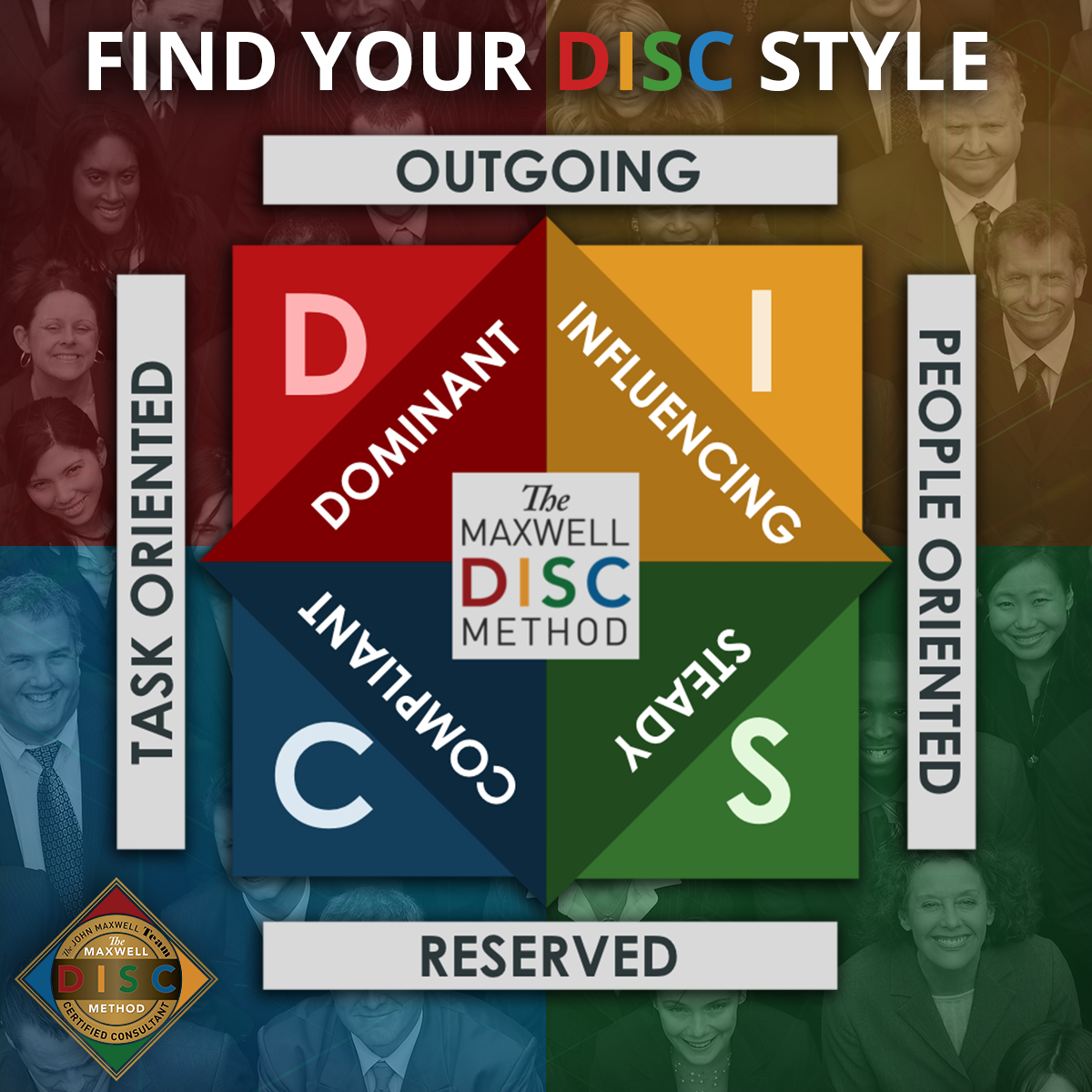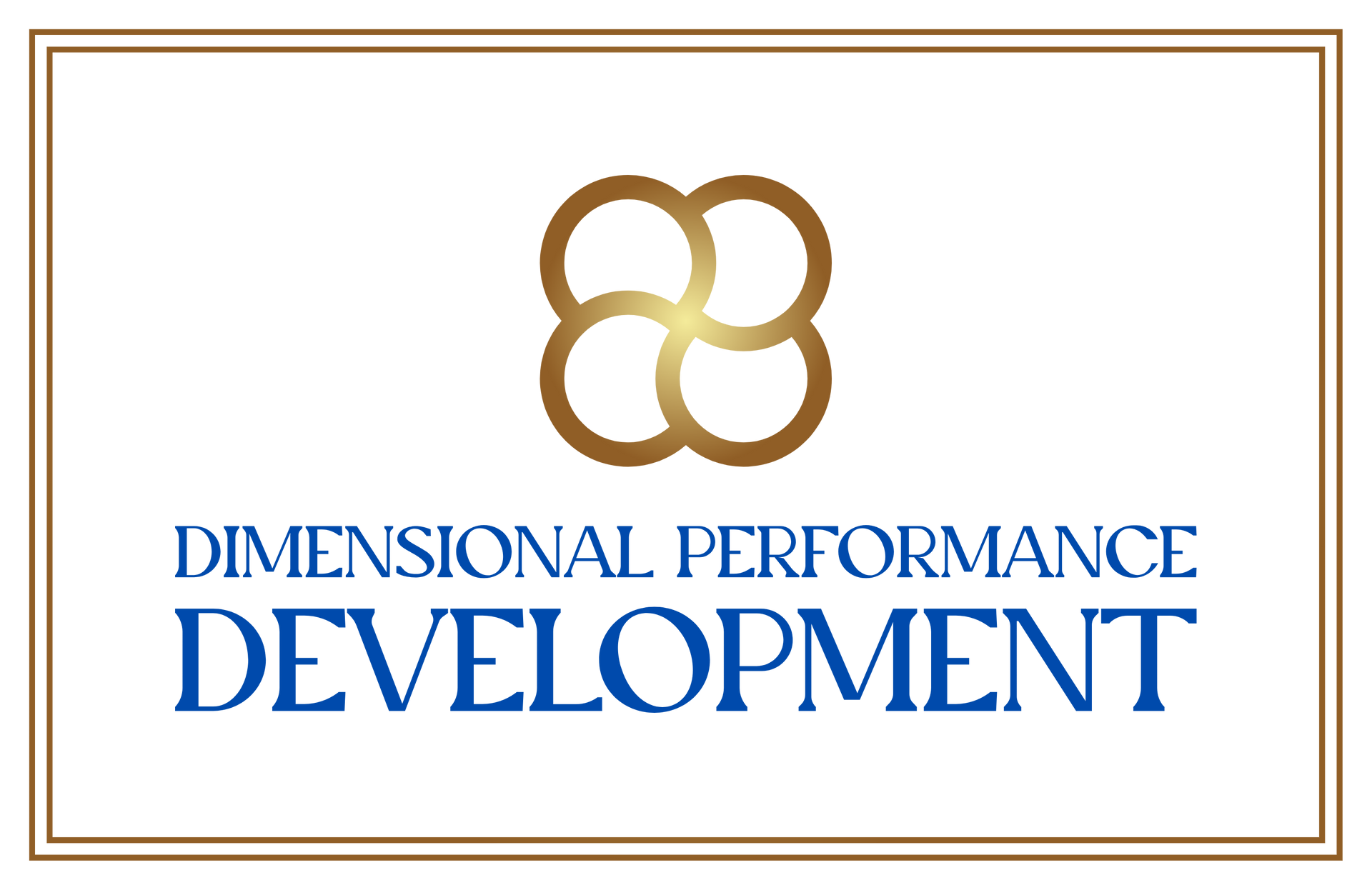Leveraging DISC for Effective Team Building
A Whitepaper

Executive Summary
As an Executive Director and Certified DISC Consultant with Maxwell Leadership, I've had a front-row seat to powerful transformations within organizations. I've watched teams trapped by communication barriers, weighed down by conflicting personalities, and struggling under unclear expectations—until they discovered the Maxwell Method of DISC. It's remarkable to see firsthand how understanding behavioral styles opens doors to clearer communication, deeper collaboration, and a renewed sense of unity. Teams previously bogged down in frustration become energized and aligned, unlocking productivity they didn't realize was possible. Organizations adopting this proven approach consistently experience a tangible shift—morale soars, conflicts diminish, and workplace satisfaction thrives. The Maxwell Method of DISC isn't just about assessments; it's about building winning teams and cultivating cultures where everyone can excel.
Introduction
Throughout my career, whether leading teams or consulting for diverse organizations, I've witnessed the ripple effect when team dynamics falter. Ineffective communication creates friction, misunderstood strengths leave potential untapped, and unresolved conflicts erode trust, ultimately driving talented people away. But I've also seen the transformation possible when these challenges are directly addressed. With the Maxwell Method of DISC, teams gain invaluable clarity about individual behaviors and team dynamics, paving the way for deeper connections and exceptional performance. It's extraordinary how quickly a team moves from struggle to synergy when they embrace DISC insights, driving success that's both impactful and sustainable.
Understanding the Maxwell Method of DISC
When psychologist William Moulton Marston first developed the DISC model, he provided a powerful lens to understand human behavior, identifying four distinct personality styles:
- Dominance (D): Task-oriented trailblazers who drive decisions and lead with confidence.
- Influence (I): Enthusiastic communicators who build connections and energize those around them.
- Steadiness (S): Reliable team players who foster cooperation and provide consistent support.
- Compliance (C): Detail-oriented analysts who bring precision, quality, and thoughtful solutions to every challenge.
What makes the Maxwell Method of DISC truly transformative is how it uniquely integrates John C. Maxwell’s leadership wisdom with actionable communication strategies and proven team-building techniques. This tailored approach doesn't just categorize behaviors—it unlocks the potential of every team member, creating cohesive, high-performing teams that achieve sustained organizational success.
DISC and Team Dynamics
Each of these DISC personality styles uniquely shapes the dynamics of a team, influencing how groups collaborate, communicate, and achieve results. Dominance types inject clarity and decisiveness into the team, boldly steering decisions but often needing support in collaborative environments. Influence types naturally uplift morale, nurturing vibrant relationships and camaraderie, yet they may require structure to stay on course. Steadiness types anchor teams with reliability and consistency, providing a supportive backbone, though sometimes needing encouragement to share their valuable perspectives openly. Compliance types bring meticulous accuracy and deep analysis, which are invaluable in ensuring quality and thoughtful outcomes, yet they often benefit from guidance when navigating rapid changes and decisions.
In my role as a DISC consultant, I've partnered with countless organizations to leverage these powerful insights, optimizing team performance in ways that noticeably elevate empathy, productivity, and collaboration. Witnessing these teams thrive, empowered by the Maxwell Method of DISC, is a testament to the transformative power of understanding human behavior and its direct impact on organizational success.
Implementing the Maxwell Method of DISC in Team Building
Successfully integrating the Maxwell Method of DISC into team-building efforts begins with a clear, structured approach. It starts with the Assessment Phase—discovering and understanding both individual and collective behavioral styles. Next is the Workshop and Training Phase, where these insights are brought vividly to life through tailored sessions, interactive exercises, and practical strategies designed to foster deeper understanding and connection. Finally, during the Integration Phase, DISC principles become an everyday practice—guiding interactions, resolving conflicts gracefully, and continuously enhancing teamwork. Leaders who embrace this structured approach find themselves not only solving immediate issues but also building inclusive, dynamic environments where everyone can thrive and contribute their best.
Measuring Success and Impact
Measuring the true impact of DISC on teams is like watching a story unfold. I look for signs of improved communication, noting moments where clarity replaces confusion and productive conversations overcome conflict. I observe tangible shifts in productivity as team members engage more deeply, empowered by understanding their unique strengths and roles. Regular assessments—both qualitative narratives and quantitative data—highlight these improvements vividly. Organizations frequently share stories of strengthened workplace relationships, higher satisfaction levels, and a newfound energy that propels them toward achieving their goals. These stories reinforce the transformative power of DISC, revealing not just incremental improvements, but meaningful, lasting change.
Common Pitfalls and How to Avoid Them
Adopting the Maxwell Method of DISC isn't without challenges—I've seen teams initially hesitate, uncertain about assessments, or leaders who struggle to consistently apply the principles learned. Yet each obstacle can become a powerful moment of growth. When organizations clearly communicate the deeper purpose and benefits of DISC, initial skepticism transforms into enthusiasm. Leadership that actively supports and reinforces these behavioral insights paves the way for genuine buy-in. Continuous training, supportive resources, and consistent application create a sustainable, positive impact. Overcoming these initial barriers isn't just about implementing DISC; it's about fostering a culture of continuous growth, where every team member feels valued, understood, and empowered to contribute their best.
Conclusion
Embracing the Maxwell Method of DISC opens a powerful new chapter for teams and organizations alike. I've watched as teams uncover hidden strengths, dramatically enhance communication, and navigate conflicts with newfound grace and clarity. This method doesn't just improve team performance—it transforms the entire organizational culture, paving the way for lasting success, cohesion, and fulfillment. The journey toward excellence begins when leaders commit to truly understanding and leveraging the unique strengths within their teams. The Maxwell Method of DISC isn't simply a strategy—it's your story of growth, unity, and enduring achievement.
References
- Maxwell, J.C. (2018). "Developing the Leader Within You 2.0".
- Marston, W. M. (1928). "Emotions of Normal People".
- Maxwell Leadership Team Resources.
- Relevant organizational psychology and team dynamics studies.


